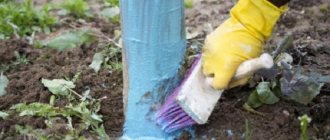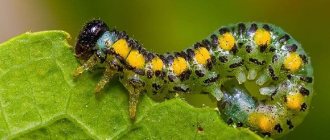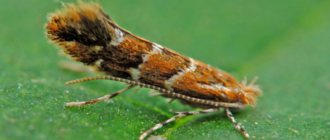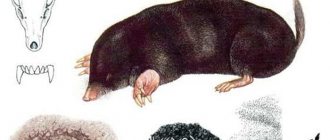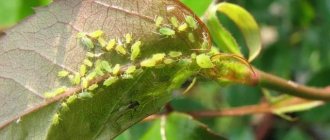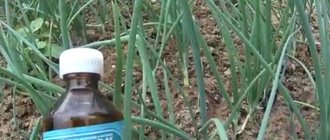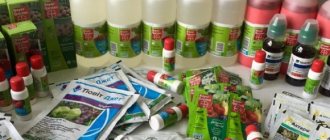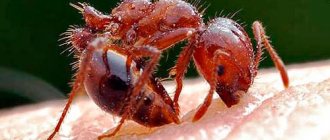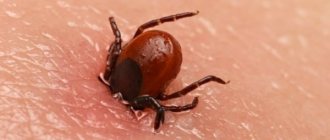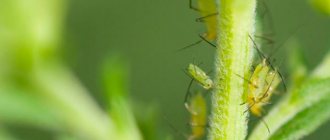Indoor flowers are planted in mineral-rich soil, which loses its properties over time. Fertilizers are washed away during the moistening process, and plants require replenishment for normal growth. There are special complexes: organic, mineral, folk remedies, with the help of which you can significantly improve their growth and flowering. One effective remedy is ammonia (ammonia). It can be purchased at any pharmacy and used for feeding and spraying home flowers.
Beneficial properties of ammonia for house plants
Ammonia has properties due to which it is successfully used in floriculture and gardening to fertilize plants. The product is used as a source of nitrogen, the main component of the organelles of indoor plants. They can only absorb it from the soil (in bound form).
Many potted flowers respond well to ammonia as a source of nitrogen: hydrangeas, geraniums, clematis, cyclamen, lilies. It is responsible for the full development of all green parts of plants.
Regardless of the method of use, ammonia has a positive effect on houseplants, this manifests itself in the form of:
- active growth;
- bright green foliage;
- abundant flowering.
In addition to enriching the soil, ammonia also disinfects it, and in some cases even helps get rid of small insects. Among them:
- mole cricket;
- aphid;
- weevil;
- spider mite;
- onion fly.
Many flower growers use ammonia in flower care because of its availability and effectiveness. It is a powerful prophylactic in the fight against certain fungal infections.
Using ammonia for indoor plants
Ammonia is used as a source of ammonia not only in indoor floriculture, but also to fertilize garden flowers and even vegetable crops.
The following are particularly responsive to fertilizer:
- peonies;
- roses;
- dahlias;
- lilies;
- nasturtiums;
- zinnias;
- geranium;
- violets;
- clematis.
To begin with, use a solution of weak concentration - 3.5 tbsp. l. ammonia per 5 liters of warm water. Ammonia dissolves faster in warm water, but the solution must be allowed to cool before watering. Fertilizer is applied strictly at the root. If a solution containing ammonia splashes onto the leaves, it can cause chemical burns to the plant. The feeding solution is used no more than once a week. As soon as the results become noticeable, it is necessary to gradually reduce the concentration and use the product less often - up to 1 time per month.
If indoor flowers are late in flowering, you can “invigorate” them with a weak solution of ammonia.
Ammonia from mole cricket
Why and in what cases is it used?
The life cycle of all plants includes the process of growing foliage, flowering and fruit formation. Nitrogen-type fertilizers help cope with this task and replenish the need of indoor flowers for this component.
Signals indicating the need for feeding with ammonia are the following signs:
- thin stems;
- slow growth;
- excessively small leaves;
- falling of the ovaries;
- yellowing of leaves in the bottom row.
Attention! If such manifestations are noticed, it is necessary to introduce compositions containing nitrogen into complementary foods. As an alternative, ammonia can be used.
Ammonia for aphids on indoor plants.
AMONGIA ALCOHOL AGAINST INSECTS Save so as not to lose! Sometimes you simply don’t have the strength to fight the ants that appear in endless sequences in the kitchen from nowhere. Ammonia will help here! You need to add 100 ml of ammonia to 1 liter of water and rinse all kitchen furniture with this solution. Do not be afraid of a specific “aroma” - it disappears in a few minutes. For us. And the “tenants” will feel it for a long time and will forget the path to your house. Ammonia will also help against hordes of mosquitoes and midges during a picnic in nature. It is enough to spray your resting place with this product and peace will be provided to you. Again, the aroma will be imperceptible to people after a couple of minutes. Ammonia: use in the countryside Those who like to grow flowers, tomatoes and other flower and vegetable crops should also turn to alcohol for help. Lilies, clematis, geraniums, and cucumbers really like feeding with this product. It is enough to dissolve 50 ml of ammonia in 4 liters of water and your plants will thank you with their healthy appearance. By the way, you can combine business with pleasure: water your indoor plants with this solution. No odors, no midges, and at the same time - fertilized flowers :) Itching from mosquito bites can be relieved by rubbing the bite site with ammonia (a mixture of equal amounts of ammonia and water) or a solution of baking soda (1/2 teaspoon per 1 glass of water). Healthy bulbs without chemicals Everyone has seen damage from a secretive proboscis: the feather becomes lighter, stripes appear on it. If you tear such a feather lengthwise, you can see small pest larvae inside. It helps in the first half of summer to water the plantings with ammonia (1 tablespoon per bucket of water) once a week. This is both nitrogen fertilizing and an odor repellent. In order for the smell of ammonia to last longer, the bed must be loosened some time after watering. If the aphid has attacked you badly, the easiest way is to hit it with ammonia*. Its solution in water is ammonia. Two tablespoons of ammonia per bucket of water plus an adhesive - a spoonful of shampoo or washing powder. The aphid falls down in shock. And ammonia quickly evaporates and a little gets into the leaf - this is a common foliar nitrogen fertilizer. Ammonia is a plant protector. It turns out that an ammonia solution can significantly make the life of amateur summer residents easier, protecting garden crops from various pests and diseases. In addition, it is believed that watering with this solution is beneficial for plant growth and is used as an additional feeding. Pests sensitive to ammonia vapors 1. The secretive proboscis is a harmful weevil that causes serious damage to onion and garlic plantings. To scare away this pest and prevent the crop from turning yellow and dying, in the first half of summer it is necessary to water the beds with garlic or onions with a solution of ammonia (25 ml per bucket of water). This procedure should be carried out once every 7-8 days. This includes feeding plants with nitrogen compounds and a high-quality insect repellent. 2. Aphids - capable of destroying greenery on many trees and shrubs, almost completely. You can get rid of these pests using the following solution: take 50 ml of ammonia and a quarter of a piece of grated laundry soap into a bucket of water (for better adhesion). Ammonia is perceived by plants as foliar fertilizing with nitrogen, but aphids die from it. 3. Carrot and onion flies - can completely destroy the harvest of onions and carrots. One of the effective methods of combating these harmful insects is watering vegetable plantings with a solution of ammonia (2 ml of alcohol per 10 liters of water). 4. Wireworms, which are found in large numbers in new areas of land, damage growing tomatoes. When planting tomato seedlings, it is necessary to pour a small amount of a weak solution of ammonia into each hole. 5. Midges on indoor plants can cause significant harm to young, newly transplanted flowers, and it’s unlikely that anyone will like such an unpleasant neighborhood on the windowsill. Getting rid of them is quite simple - just water the plants with an ammonia solution (25 ml of alcohol per 2 liters of settled water). For most indoor flowers (lilies, clematis, geraniums) this solution is an excellent fertilizer. Another method of dealing with annoying midges is to dust the soil in pots with dry, powdered pepper (you can use red chili or black peas).
The effect of watering with ammonia on indoor flowers and soil
Ammonia has a wide spectrum of effects on plants and soil. Its use is advisable in a number of cases, including:
- feeding The introduction of ammonia into complementary foods promotes the active growth of some plant species. In addition, it helps restore the flower after the winter period;
- pest control. Fertilizing with this product is a good preventive measure against certain types of insects. The composition penetrates deep into the substrate and has a cumulative effect. Flowers treated with ammonium solution are, as a rule, not susceptible to attack by insects and midges;
- prevention of soil acidification. Ammonia is a moderately active alkaline agent, so when using it you do not have to resort to liming the substrate. After feeding with this product, nitrogen compounds do not accumulate in plants;
- soil reclamation. If a flower has been growing in the soil for a long time and is not replanted, then the soil loses its supply of microelements. At the same time, it becomes unsuitable for growing indoor plants. Thanks to the use of ammonia, the period of soil restoration passes much faster, and the recovery period of plants is noticeably reduced.
Important! If garden trees are treated with ammonia, the fruit must be thoroughly washed before use.
Ammonia for processing strawberries
An ammonia preparation is not suitable for fertilizing strawberries, but to protect against diseases and pests, gardeners use ammonia.
During the season, he recommends carrying out three treatments with ammonia:
- The first time should be treated in the spring when tender young leaves appear. The solution is prepared as follows: 10 liters of water, 40 ml of alcohol, a piece of laundry soap. Water the bushes from above so that the solution gets onto the leaves, stems, and also into the soil. This type of watering will kill all pests that have overwintered in the soil. After 2-3 days, water the plants with plain water.
- After flowering, the following treatment will be required: 3 tbsp. spoons of alcohol into a bucket.
- To prepare the bushes for winter, prepare a mixture for watering strawberries: pour 40 ml of ammonia into a bucket of water, add 5 drops of iodine.
Preparation of solution and dosage
In order not to harm indoor plants, it is important to calculate the required amount of ammonium solution. Moreover, for different types of fertilizing its certain concentration is used. Thus, a low-concentrated composition is used to spray leaves, and a high concentration is used to fertilize the soil.
Ammonia is appropriate in the following cases:
- prevention and control of insect pests;
- disinfection of flower pots;
- Direct feeding of soil and greenery.
The fertilizer concentration option depends on the reason for its use.
Rules for using ammonia
Ammonia is a unique remedy that has a dual effect. It is both a biocide that prevents the development of insects and a fertilizer. Today, there are not many fertilizers on the market that can be compared in their properties to ammonium solution. The product is used for spraying, protection against parasites and feeding.
For spraying
If the plant is fertilized by spraying, a low-concentrated solution is used. For this, 1 tbsp. l. ammonia is diluted in 5 liters of cold water. The composition is sprayed with a spray bottle onto the leaves and stem.
When spraying home flowers, the following rules must be observed:
- do not use a highly concentrated composition, as this may cause burns to the leaves;
- do not allow contact with buds and flowers;
- use fine sprays.
Attention! If the ammonium solution does get on the flowers or buds, they need to be washed out of the sprayer with water at room temperature.
For protection against parasites
Even if flowers grow only indoors, they can still be affected by insect pests brought in, for example, with purchased soil or from neighboring plants. In this case, it is also recommended to use ammonia.
The product needs to be diluted in different ways - it directly depends on the type of pest:
- aphid. This insect is very dangerous, since its food is the juice of domestic plants. Using an ammonium solution you can completely get rid of this parasite. For this you need 1 tbsp. l. Dilute the product in 3 liters of water. Use for root feeding;
- weevil. Despite its small size, this bug eats all parts of plants, including the root system. You can get rid of it by mixing 1 tsp. ammonia in 1 liter of water and treat flowers once a week;
- Drosophila (soil midge). These insects are characterized by rapid spread, and at different stages of their development, so the fight against them must be effective. The flower is treated weekly with a concentrated composition (1 tablespoon of ammonia per 1 liter of water) until the fruit flies completely disappear.
Peculiarity! The ammonium solution remains in the treated soil for a long time, so it is a good preventive measure against the emergence of new pests.
For feeding
It is necessary to fertilize indoor flowers with ammonium in the following cases:
- there are signs of nitrogen starvation;
- leaves turn yellow and dry;
- to increase leaf density;
- in the absence of flowering.
With such signs, it is necessary to dissolve 1 tbsp. l. ammonia in 1 liter of water and water the flower under the root system.
Attention! During the period of bud formation, ammonia can be used as a fertilizer, but oversaturation of the soil with nitrogen should be avoided. For this you need 1 tbsp. l. dissolve ammonia in 4 liters of water.
Application in horticulture and floriculture
Solution for watering house plants
For different purposes, ammonia solution is diluted in different ways. Basically, take 10% ammonia and add 4 tablespoons of the product per 5 liters of warm water. Before use, the solution is cooled to room temperature.
Container handling
Before planting indoor flowers, you need to treat the pots and boxes to disinfect them.
To do this, pour 60 ml of ammonia solution with hot water and dissolve grated 100 g of laundry soap in it. Containers are rinsed well in water and dried.
Feeding the green parts of the plant
During the period of active growth of seedlings, with signs of nitrogen starvation or to increase the green mass of decorative leafy indoor plants, you should also water the flowers with ammonia.
A solution of 1 tablespoon of ammonia per 1 liter of water is used as a nitrogen fertilizer. Plants are watered at the root.
You can also spray with this fertilizer, but use alcohol in an even lower concentration to avoid burns.
During the budding period and for the lush flowering of indoor crops, ammonia is used for feeding. The dosage of ammonia is taken in a weak concentration - 1 tablespoon per 3 liters of water, since if the soil is oversaturated with nitrogen, the plant may not bloom, but use it up for rapid growth of green mass.
Using ammonia for tomatoes, video:
Possible harm
When using ammonia as a fertilizer for indoor flowers, you need to follow the basic rules:
- start fertilizing with low concentration solutions;
- do not use ammonia simultaneously with other nitrogen fertilizers;
- It is not recommended to use more than once a week.
In addition, it is worth remembering that ammonia is a toxic substance, so you need to:
- Fertilize only moist soil (immediately after watering);
- water only under the rhizome;
- prevent contact of the concentrated composition with the stem and leaves;
- observe the dosage.
Failure to comply with these measures may result in leaf burns.
What are the benefits of nitrogenous compounds?
Ammonia is a clear white liquid with a pungent odor; it is widely used for household and medical needs. Ammonium solution or in other words ammonia tincture. Many gardeners use ammonia as a fertilizer for indoor flowers, garden and vegetable plants. This chemical compound can serve as a good source of nitrogen for plants.
Nitrogen is one of the most important elements for plants. It promotes the process of photosynthesis. If there is a lack of nitrogen in the soil, the production of chlorophyll is disrupted and plant diseases - chlorosis - appear. The leaves lose color, turn yellow and become discolored. Over time, the leaves die, buds and flowers fall off. The plant may die.
Fertilization with nitrogen compounds promotes the growth of leaves and stems. The plant acquires a rich, rich green color. Nitrogen is necessary for all living crops; the only difference is in the amount of the element consumed.
Precautionary measures
When using ammonia, the following precautions must be taken:
- do not inhale its vapors (may provoke arrhythmia);
- avoid contact with ammonia for people who have problems with blood vessels;
- Avoid contact of the concentrated solution with unprotected areas of the skin (may cause chemical burns);
- carry out processing in a ventilated area.
To avoid negative consequences, you need to follow a number of rules:
- use protective gloves and a respirator;
- do not mix with other formulations, except those that contain iodine;
- Do not treat indoor flowers in hot weather.
Ammonia is in the medicine cabinet in almost every home, but few people know that it serves as a good food for many types of indoor plants. It activates their growth and stimulates the process of bud formation.
Safety when using ammonia
Ammonia solution is a toxic substance even at a low concentration of 10%, so it is very important to follow safety rules when working with the substance in order to protect yourself and plants from the damage it can cause.
For a plant
When working with flowers, it is very important not to use excessive doses of ammonia, which harms the flowers by deteriorating the quality of the soil. It is necessary to calculate the required amount of concentrate for irrigation, avoiding its contact with foliage.
It is also not recommended to prepare this mixture for several weeks; it should be used immediately to preserve minerals.
It is important to adhere to the recommended feeding regimen, since shortening the interval between watering will not benefit the flowers, but rather, on the contrary, will lead to rotting of the root system. In this case, you cannot use the ammonium solution simultaneously with other nitrogen fertilizers.
For man
Ammonia vapors can seriously harm human health and cause poisoning or an allergic reaction, so it is important to adhere to the following rules when working with the substance:
You should not ignore these rules even if you need to prepare a small amount of liquid for irrigation, which, if it comes into contact with the skin, causes burns, as well as disruption of the mucous membranes and respiratory tract.
Reviews
Irina: “I just recently found out that ammonia solution works so well on dracaena. The leaves at the tips began to turn yellow and dry out. A neighbor suggested that many flowers love this type of feeding. After several waterings at the root, the leaves stopped withering and turning yellow. The product really works."
Vladimir: “My wife uses various fertilizers at the dacha, including ammonia. I decided to try fertilizing all my hydrangeas at home. I haven't noticed much change, but she says they are blooming better and the leaves are greener now. He advises everyone he knows to use this fertilizer.”
Marina: “There are bugs in my geraniums. A friend suggested using ammonia in combination with store-bought fertilizer. I did several waterings at the root and two sprays, and noticed that there was no new damage to the leaves by bugs. This means the product is effective and works.”
5 / 5 ( 1 voice )

